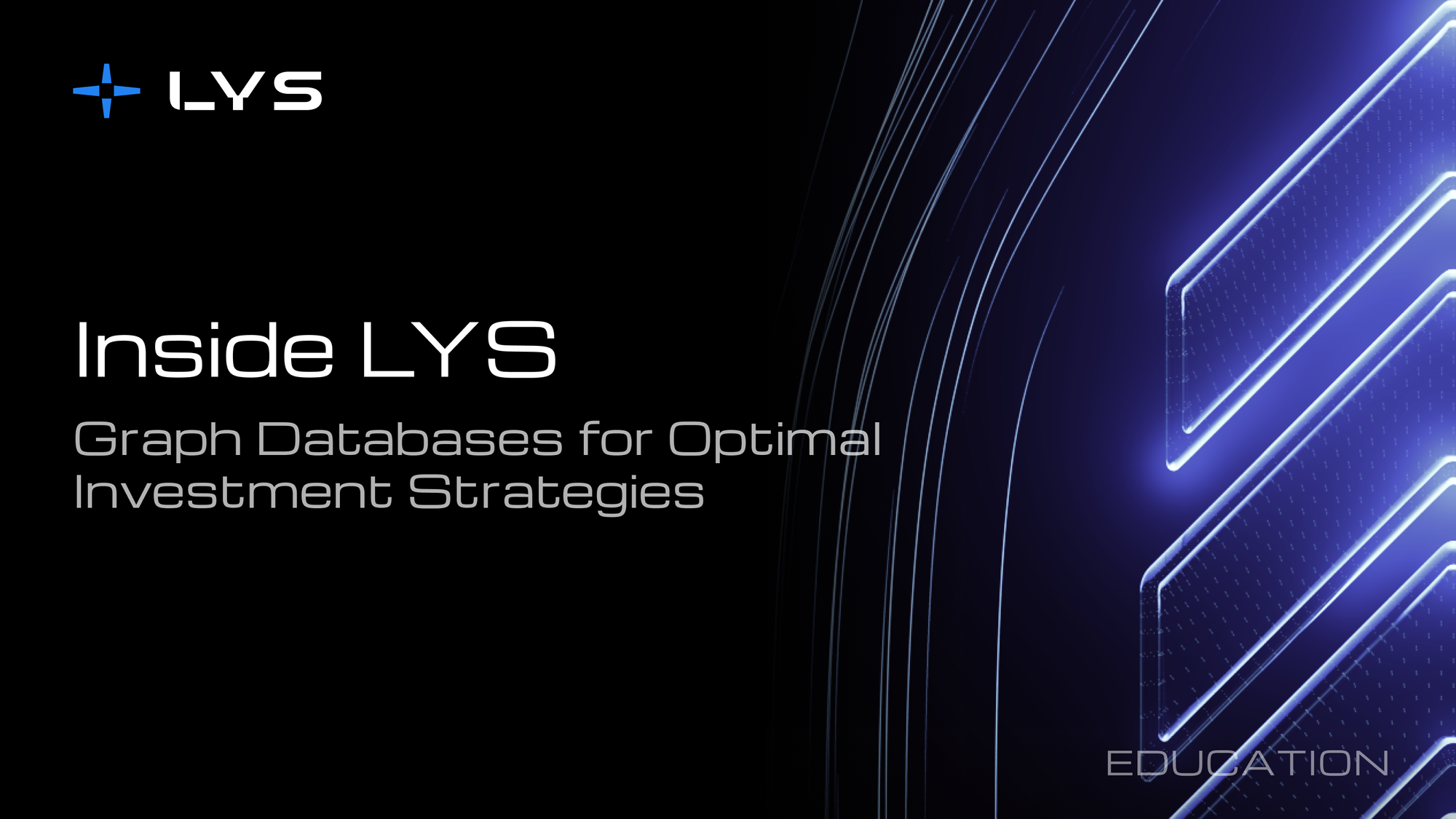Inside LYS: Graph Databases for Optimal Investment Strategies

Decentralized finance (DeFi) has undergone a Cambrian explosion in recent years, giving rise to thousands of alternative blockchains and even more protocols. This exponential growth has fragmented liquidity across an ever-growing number of pools, introducing increased risk and making it practically impossible to meaningfully assess optimal yield strategies.
LYS Protocol incorporates a number of innovations to model and analyze the best investment strategies across complex data points. Graph databases form a crucial component of the protocol, allowing LYS to balance risk and return effectively.
Read on to discover the integral role graph databases play in the broader LYS ecosystem.
What Are Graph Databases?
Graph databases are important tools for representing and analyzing interconnected data points. Data is stored in nodes and relationships, which are mapped to DeFi protocols, assets, and transactions in the context of LYS.
This structure makes graph databases ideal for querying and representing the complex, interconnected interactions that define the on-chain landscape.
How Do Graph Databases Work?
LYS harnesses graph databases for a range of yield optimization functions, including data modeling, cumulative risk and return calculations, path evaluation, and scalability.
Graph Data Modeling
LYS uses nodes to represent financial protocols or investment opportunities, while relationships capture investments, risk scores, and returns. This structure enables efficient evaluation of investment paths. Each node and relationship is assigned specific key attributes, which are critical for assessing the earning potential and relative risk of investment paths. Risk scores reflect the likelihood of adverse events, while returns indicate the expected benefits from specific investments.
Cumulative Risk and Return Calculations
Cumulative risk, or overall risk score, is calculated by considering the combined effect of multiple risks. This method ensures a realistic assessment of the likelihood of adverse events. Similarly, cumulative returns are computed by considering the compounded nature of returns. This approach provides a more accurate representation of potential investment performance – empowering users to make informed decisions with actionable insights.
Path Evaluation
Path evaluation involves aggregating risk scores and returns for each investment path to ensure that investments maintain acceptable risk limits while maximizing returns. A large number of paths can be evaluated to determine the optimal investment strategy, focusing on minimizing cumulative risk or maximizing cumulative returns. Constraints, such as maximum allowable risk and targeted returns, can be taken into account in order to tailor the investment strategy to users’ unique preferences.
Scalability
Scalability is a critical consideration for any solution tasked with managing large financial networks.
LYS utilizes three key approaches to ensure that implementations remain robust and scalable:
- Efficient storage is vital in maintaining low latency at scale. To this end, LYS uses dynamic computation to reduce storage requirements by calculating accumulated risks rapidly. Databases also store precomputed risk values to speed up queries, making it easier to compute frequent queries involving large datasets.
- Parallel processing further enhances performance, particularly for large-scale computations.
- Indexes and constraints also help to ensure efficient querying while maintaining data integrity. Unique constraints are placed on node properties to boost efficiency. Additionally, frequently queried properties like risk scores and APYs are indexed to improve overall performance.
Conclusion
Graph databases provide a robust framework for evaluating and optimizing investment strategies within the LYS Protocol. These databases empower users to identify the most promising investment paths by comprehensively balancing risk and returns, enhancing decision-making and maximizing yield generation.
The scalability and efficiency of graph databases allows the LYS Protocol to handle the ever-growing complexity of DeFi ecosystems. This ensures that the platform can continue to provide accurate, low-latency insights, even in the face of a constantly increasing number of assets, protocols, and transactions.
By taking advantage of these capabilities, LYS is able to offer users comprehensive, data-driven insights, maximizing risk-adjusted returns with superior yield generation strategies.

